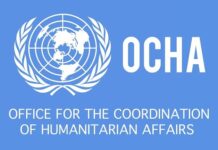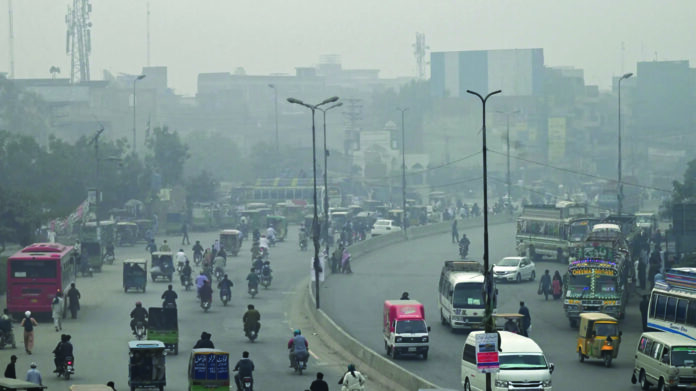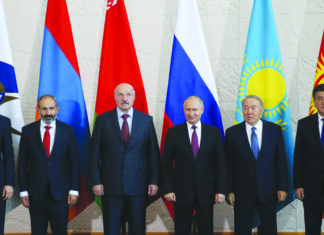Pollution in Pakistan is not a new phenomenon. It has been there in other countries around the world. There are instances of its occurrence in London, also which started in the 18th century. London smog was notorious, as the coal which was used to burn had high amounts of Sulfur. However, no concrete action was taken for about a century. In Great Smog of London in 1952, a thick, toxic smog covered London for about 5 days (5th to 9 th December). Around 3 to 4 thousand people died in a span of 1 to 2 weeks because of bad air quality. It was at that time that there was a great consternation among people because of this, which led to a political furor for the resolution of this issue. Smog was also there in Paris, Copenhagen, Stockholm, and some other cities. Eventually, all the affected cities reached an agreement that some steps must be taken to curtail this. Pakistan witnessed smog for the first time in November 2016. At that time no one could understand what this was actually. After some weeks, the weather got clear due to the rain. In 2017, there was another spell of smog. After that this phenomena became recurring.
A Commission was constituted by the High Court, which played a key role in raising awareness about the issue. The Smog Commission submitted a report in the Supreme Court, which recommended some actions like: tree plantation, planning an urban development, low Sulfur fuels, adoption of Euro 2 standards, use of catalytic converters in cars, controlling crop and waste burning, controlling fugitive dust (It relates to fine airborne particles which escape from open areas like unpaved roads and are not released through restricted sources like exhaustive pipes etc. and building capacity to monitor and forecast. However, the important thing was that the actions must be taken cumulatively, not in isolation for achieving a sustainable and lasting impact.
In 2018, Greenpeace (a global network of independent campaigning organizations, conducting environmental studies and advocacy), reported Lahore was counted among 50 hot spots of the world as regards emission of nitrogen dioxide between the months of June and October. The same was true of the energy sector. The emissions were extremely dangerous tohuman lives because they also affected the mental and cognitive functions of human beings. Apart from industrial pollution, natural pollution is also harmful for human life.
Here mention may be made of a case study at the international level. In China, policymakers were exposed to the shocking revelation that air pollution was reducing the life expectancy of every person by 5 to 6 years, usually attributed to the EPIC Air Quality Life Index (AQLI). It also led to a 4 percent strain on the budget and there was wasting of 75 percent of water resources and 20 percent of land. This huge cost in terms of economy and health convinced the planners to conduct a source apportionment study, which revealed that 40 percent of pollution was being caused by coal-fired power plants, 20 percent by car emissions, and other reasons, like electricity and volatile organic compounds. Industrialization and natural reasons were also contributing factors for poor air quality. These findings led to development of long term vision by Chinese policy makers. They decided to minimize pollution in the next 15 years by reducing air emissions. They planned that by 2030 they had to acquire the level of being at 35 micro grams per cubic meter. This target is part of China’s National Ambient Air Quality Standards (NAAQS). WHO guideline for PM 2.5 is 5 μg/m³ (revised 2021), hence it can be said that China set interim national targets above WHO’s.
Then they planned for desulphurization of coal through increasing public transport, opting for more electric cars, increasing the train lines, and investing in wind energy. They decided to shift to renewable sources of energy and invited the private sector to work in collaboration with the government by giving them various incentives. The plans they had envisioned involved a huge financial cost, which could be materialized by making the business people work with the government by investing their money. The plan also included a green financial system with investment returns, encouraging green policies. 14 different financial policy measures were taken, where green stock exchanges were listed. It was made clear that only those companies would be listed and their stocks would be traded which could show a trend of achieving sustainable and green targets and could bring green equity. Green financial instruments also included green bods. Other measures included introducing green insurance, financial systems, and compulsory environmental disclosures for companies. As a result, since 2013, there has been a faster growth of renewables in China. Desulfurization has increased by more than 90 percent. Subways of 1000 kilometers in length are built. The number of hazardous levels has fallen, and the number of clean air days has doubled.
This success case study is proof that vision, plan and finances are required to convert a dream turn into a reality because a social aspect is also involved in such initiatives. Many other developed countries have resolved the problem of air pollution to a great extent through adoption of different measures and are struggling hard to overcome this problem further. Achieving these targets is not possible in 4 to 5 years. We all must collectively support these measures. Vision involves many years but its impact is far stronger, and this is acutely required. Technological upgrades, policy reforms and public private partnerships are sure to bring good results. There can be different key performance indicators and targets Pakistan may set like expanding railway lines, passing a National Clean Air Act with legally binding PM 2.5 standards, upgrading to Euro VI fuels/engines, increasing monitoring through vehicle inspection & maintenance. Crop residue management package (infrastructure improvement as machinery subsidies), a continuous emissions monitoring (CEMS) for power plants and industrial units through dashboards.





















